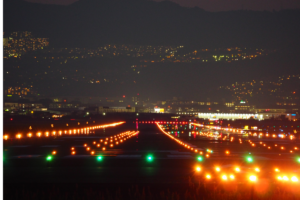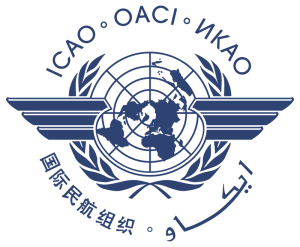Airport operators face many challenges when planning their runway infrastructure projects. One significant challenge in the coming decades will be a substantial rise in the number of passengers passing through their airports, which, according to an article in Reuters, is expected to more than double by 2050.
Indeed, airports today are already feeling the pressure. For example, Heathrow Airport in London, which manages traffic in one of the world’s busiest airspaces, reported a 5.5 percent growth in 2017, over the same period in 2016, to 5.27 million passengers. In 2021, Heathrow served 19.4 million passengers, of which 17 million were estimated to be international travelers. These statistics further testify to the dizzying increase in the number of humans that continue to move around the planet.
This situation presents airports with multiple opportunities to increase the capacity of their operations to accommodate the needs of potentially millions of additional travelers safely and efficiently.
The Role Of Runway Lighting In Maintaining Efficiency At Growing Airports
Additional challenges present themselves in managing air traffic when airports begin to expand. Doubling the number of passengers will see airlines adding more planes to their fleets, increasing air traffic and requiring the optimization of runway lighting systems. Whether it’s a large metropolitan airport that sees hundreds of flights every day or a smaller regional airfield, high-quality runway lights play a critical role in maintaining efficiency and safety standards as airport operators prepare to manage more passengers.
Here are four critical ways that runway lighting supports airport expansion:
Enhancing Airport Safety
More air traffic means additional management challenges and less tolerance for delays, go-arounds, and diversions. Runway lights provide navigational assistance to airline pilots, especially during adverse weather conditions, helping to keep traffic moving smoothly and efficiently. They also assist in minimizing the risk of runway incursions and accidents.
Ensuring Compliance With Regulatory Organizations
Airport operators must ensure that their expansion plans adhere to international aviation standards set by organizations like the ICAO and FAA. Using high-quality runway lights from reputable suppliers will help ensure regulatory compliance so engineers can move forward with expansion projects with confidence.
Increasing Operational Efficiency
Advanced runway lighting systems technology has improved energy efficiency and requires minimal maintenance, helping airports reduce operational costs. For example, LED technology consumes significantly less power than traditional halogen lights, lowering energy consumption. Additionally, LED’s longer lifespan means less frequent replacements, minimizing delays and supporting higher runway efficiency.
Read More: The Most Impactful Technology Advances In Airport Lighting
Contributing To Sustainability Initiatives
Sustainability is top-of-mind with airport operators around the world, and runway lighting plays a key role in sustainability initiatives. LED airfield lighting systems are known to have lower carbon emissions than other blubs, which helps airport operators reach their sustainability goals. Integrating smart lighting controls further helps cut carbon emissions and reduces power consumption, making airports that use them more attractive to airlines and regulatory bodies.
Expanding The Power Grid To Support Increased Demand
Of course, lights don’t operate on their own. They need the proper electrical infrastructure to provide consistent, reliable power, especially if the lights are far from the power source.
Many runway lighting suppliers can also provide customized electrical infrastructure redesigns that easily support additional or larger runway lighting systems. These suppliers are also often a primary source for the constant current regulators (CCRs), cables, cable accessories, and other components that make up a complete solution to fulfill the specific requirements of most airport expansion projects.
Anticipated Growth Projections For The Airport Lighting Market
According to the Commercial Airport Lighting Research Report released by Allied Marketing Research in 2024,the global airport lighting market was valued at $.07 billion in 2023. However, they project an annual growth of 7.6 percent from 2024 to 2033, when it will reach a market value of $1.3 billion.
The report cites the global expansion of airline fleets and additional routes as driving forces in this growth as the aviation sector expands its operations to accommodate the surge in air travel. Additionally, airline operators are looking to reach more destinations, especially in areas traditionally underserved by air transportation networks.
As the air industry expands, so do the opportunities to integrate scalable advanced technologies into airport runway infrastructure to help with expansion initiatives. For example, technology is available that can provide airports with predictive maintenance analytics, enhanced ground collision detection, and improved nighttime and inclement weather visibility. Many technologies are also designed to lower energy consumption, helping airports reach their budgetary and sustainability targets.
At Airport Lighting Company, we’re ready to help with your airport runway expansion projects with lighting and power technology designed to support future growth. Get in touch with our team anytime for a customized solution that puts your needs first.
Call Airport Lighting Company For The Latest in Airport Lighting Technology
The Airport Lighting Company team is standing by to answer your questions about how our tech-based products can help improve the safety, reliability, and efficiency of your runways. Call 315-682-6460 for fast, friendly service you can count on.






